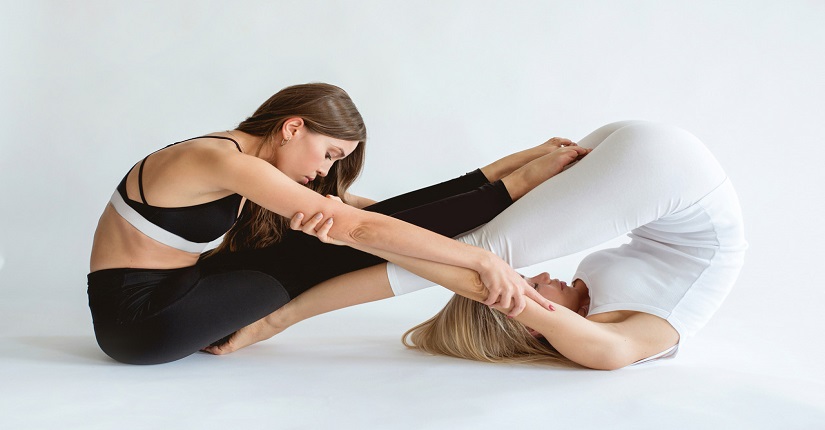
As of my last knowledge update in September 2021, “Yang Yoga” refers to a dynamic and active style of yoga practice that focuses on building strength, flexibility, and endurance. It is often contrasted with “Yin Yoga,” which is a slower and more passive practice targeting connective tissues and promoting relaxation.
Yang Yoga typically involves flowing sequences of postures (asanas) synchronized with breath, similar to Vinyasa or Power Yoga. It can be physically demanding and is designed to challenge the muscles and cardiovascular system. Practitioners may experience an increased heart rate, improved circulation, enhanced muscular engagement, and a sense of vitality.
Common forms of Yang Yoga include Vinyasa Yoga, Ashtanga Yoga, Power Yoga, and even certain styles of Hatha Yoga that emphasize continuous movement and exertion. The practice can vary in intensity and pace, catering to different fitness levels and goals.
How to do Yang Yoga
Yang Yoga is a dynamic and active style of yoga that focuses on building strength, flexibility, and endurance. Here are some general steps and guidelines to help you get started with a Yang Yoga practice:
Warm-Up: Begin with a gentle warm-up to prepare your body for more intense movement. This might include some light stretching, joint rotations, and a few rounds of Sun Salutations or other dynamic movements.
Choose a Sequence: Yang Yoga often involves flowing sequences of postures. You can follow a specific sequence from a yoga class, video, or instructor, or you can create your own. Focus on incorporating a variety of poses that target different muscle groups and movement patterns.
Breath Awareness: Coordinate your breath with your movements. Inhale as you move into expansive poses, and exhale as you move into deeper stretches or more challenging postures. Deep, conscious breathing helps you stay present and connected throughout your practice.
Build Heat: Yang Yoga is known for generating heat and increasing heart rate. Aim to maintain a steady and continuous flow between poses, allowing your body to build warmth and energy. The flowing nature of the practice helps improve circulation and promotes cardiovascular health.
Incorporate Strength and Balance: Yang Yoga often includes poses that engage and challenge your muscles. Focus on standing poses, arm balances, inversions, and other poses that build strength and improve balance. Remember to maintain proper alignment to avoid strain or injury.
Stay Engaged: Throughout your practice, stay engaged mentally and physically. Pay attention to your body’s sensations and limitations. Push yourself within a safe range, but always listen to your body and avoid pushing too far beyond your comfort zone.
Cool Down and Stretching: After the more intense phase of the practice, gradually transition into cooling-down poses. Include stretches that target the muscles you’ve worked during the practice. This helps prevent muscle stiffness and promotes flexibility.
Final Relaxation: Finish your practice with a brief period of relaxation. You can lie down in Savasana (Corpse Pose) and focus on your breath and body sensations. This allows your body to absorb the benefits of your practice and promotes a sense of calm.
Hydrate and Rest: After your practice, drink water to stay hydrated. Yang Yoga can be physically demanding, so make sure to give your body the rest it needs to recover.
Practice Regularly: Consistency is key in any yoga practice. Aim to practice Yang Yoga regularly to experience its full benefits. It can be a great complement to other forms of exercise or yoga styles.
Benifits of Yang Yoga
Yang Yoga offers a wide range of physical, mental, and emotional benefits, similar to other active and dynamic forms of yoga. Here are some of the potential benefits of practicing Yang Yoga:
Strength Building: Yang Yoga involves active and dynamic movements that help build muscular strength and endurance. Holding and transitioning through challenging poses can target various muscle groups, promoting overall body strength.
Flexibility and Range of Motion: Regular practice of Yang Yoga can improve flexibility by stretching and elongating muscles. The flowing sequences help increase joint mobility and enhance your overall range of motion.
Cardiovascular Health: The continuous and rhythmic nature of Yang Yoga can elevate your heart rate and promote cardiovascular fitness. This can improve circulation, enhance lung capacity, and support a healthy heart.
Stress Reduction: Like all forms of yoga, Yang Yoga emphasizes breath awareness and mindfulness. The combination of movement and breath can help reduce stress, calm the mind, and promote relaxation.
Energy and Vitality: The dynamic nature of Yang Yoga can invigorate the body and create a sense of vitality. It can help you feel more awake, alert, and energized.
Body Awareness: Practicing Yang Yoga encourages you to become more attuned to your body’s sensations, alignment, and limitations. This heightened body awareness can lead to better posture, movement mechanics, and overall self-care.
Improved Balance and Coordination: Yang Yoga often includes balancing poses and transitions, which can enhance your sense of balance and coordination. This can have positive effects on daily activities and sports performance.
Mental Focus: The synchronization of movement and breath requires concentration and focus. Over time, this can enhance your mental clarity and concentration skills.
Endorphin Release: The physical exertion involved in Yang Yoga can trigger the release of endorphins, which are natural “feel-good” hormones that contribute to a positive mood and sense of well-being.
Confidence and Body Image: As you progress in your Yang Yoga practice and achieve new poses or levels of strength, it can boost your confidence and improve your body image.
Mind-Body Connection: Yang Yoga promotes a strong connection between your body and mind. The practice encourages you to be fully present in the moment, fostering a deeper mind-body connection.
Posture Improvement: Engaging in Yang Yoga can help correct postural imbalances by strengthening and stretching muscles that contribute to proper alignment.
Calorie Burn and Weight Management: The dynamic and active nature of Yang Yoga can contribute to calorie burning, which can support weight management goals when combined with a balanced diet.
© Indian Yoga Expert 2026 | All Rights Reserved
© Indian Yoga Expert 2026 | All Rights Reserved